What is the "No Trace" technology?

NO TRACE is an expression we first encountered in a sensitisation campaign (Leave no trace) ran by the NPS (National Park Service, US) in the ’60s. When, in 2012, a blogger described our activities on an arborists’ forum as ‘No Trace’, we adopted that terminology to qualify the new technologies we develop to build temporary structures in trees, without leaving a trace.
Do we need "No Trace"?
Yes, definitely! We need “No Trace” because our interaction with Nature should not have a negative impact on the environment.
Once we were going out to “take fresh air”, today, we wander in Nature to “recharge”. We disconnect to reconnect. What was mundane yesterday has become an experience. The language evolved because our ways of interacting and hearing nature have changed.
Tree-based activities relying on an infrastructure that damage the trees makes no sense. The rarer trees become, the weaker our link to nature and the more crucial it is to create coherent activities that restore our connection with nature.
The first accrobranch adventure parks appeared around three decades ago and, despite laudable progress in the fixation techniques, damages still occur. Whereas many park promotors use damage-limiting fixations, claiming that they leave no trace is often more a marketing gimmick than a reflection of reality.
As, today, the regulators require parks to comply with a lot of norms, those are mainly geared towards ensuring public safety. The trees, that provide the very activity that bring revenue to the park managers and joy to their visitor, are the ones who suffer most from the lack of interest they receive.
For “Trees and People”, the “No Trace” philosophy is to learn to coexist with the trees, woods and forests, and we develop systems to achieve just that!

What are the current fixation options?
Today, 4 different fixations techniques are recommended to limit the impact on trees:
Circling
Blocks of woods are placed between the tree bark and the cables used to support the structure.
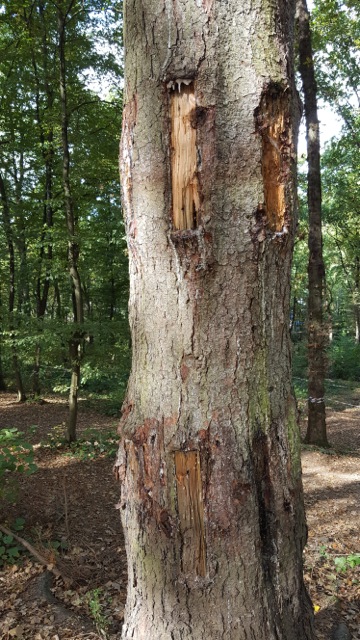
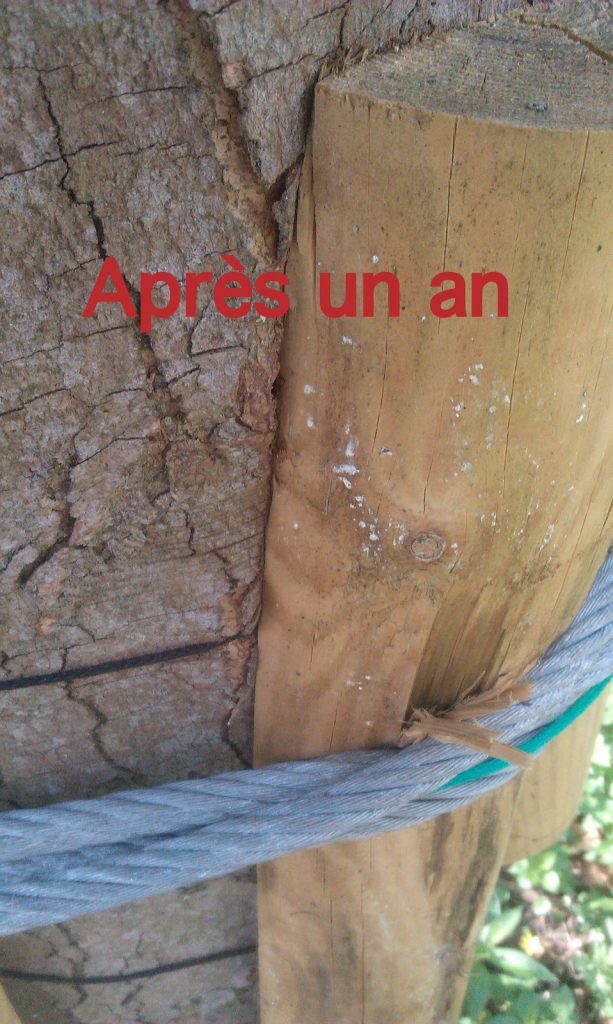
The principle of circling is to allow the sap to pass between the blocks that separate the cable from the shaft. These protections are made of blocks of wood or cylinder cut in half in the longitudinal direction and of which a flat face is brought into contact with the bark.
This technique is fairly efficient and economical, but only in the short term and outside periods of growth. The images – and – show the tree’s attempt to compensate for its inability to push back the protections by increasing its diameter where it is still possible.
These photos were taken just a year after the strapping was installed.
If the trees have adopted tubular forms, it is because they resist the various constraints they have to face. The deformations caused by this type of strapping create zones of weakness and discontinuity of the ability of the tree to distribute stresses on all of its tissues.
Clamping
To avoid the use of bolts, nails or screws, wooden beams clasp the tree trunk to stabilize the platforms.
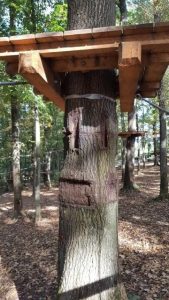
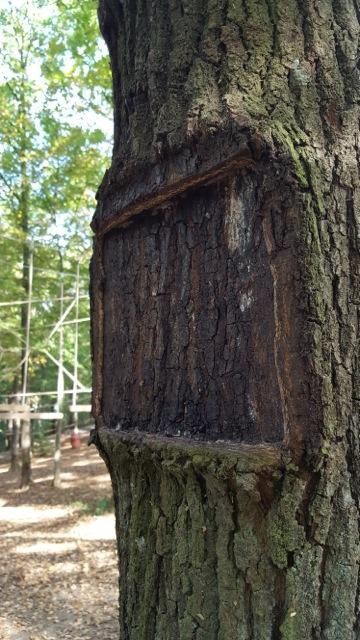
The purpose of fastening platforms by clamping is to avoid the use of invasive techniques such as screws and nails. This is a laudable goal, but clamping does not take the tree growth into account
Park builders argue that you can loosen the threaded rods to allow for the tree’s growth, but, in reality, loosening the threaded rods would imperil the security of the infrastructure…
Some platform can be installed with a straps and weight balancing systems. This is a far better option as they can indeed be relocated easily. With proper follow-up, this prevents some of the deformation damages caused by traditional platforms. However, the circling fixation still part of that system remains a cause for concern.
Drilling
A metallic bolt going through the trunk is used as direct support for platforms or as an anchor point.
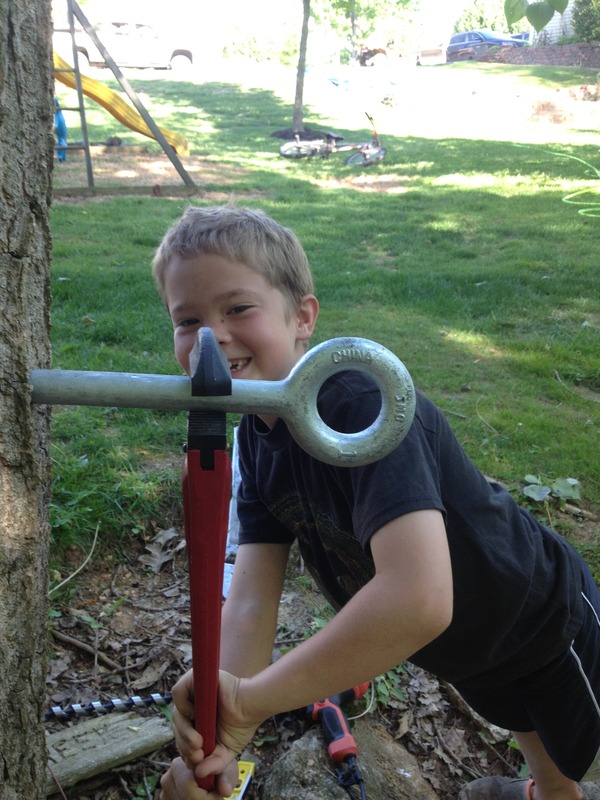
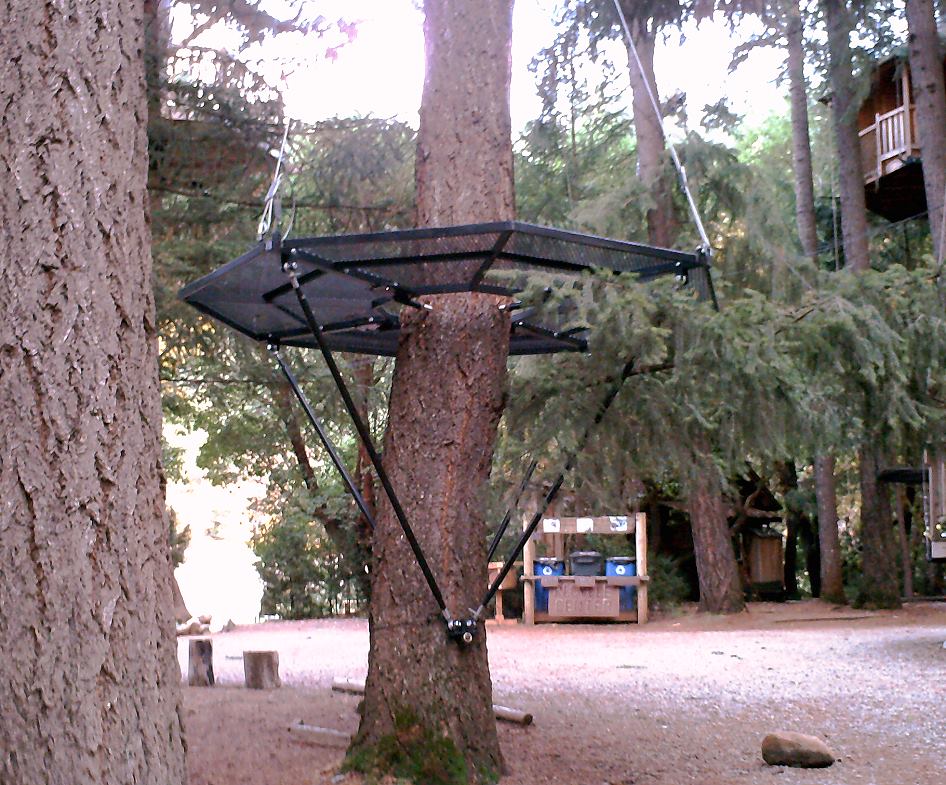
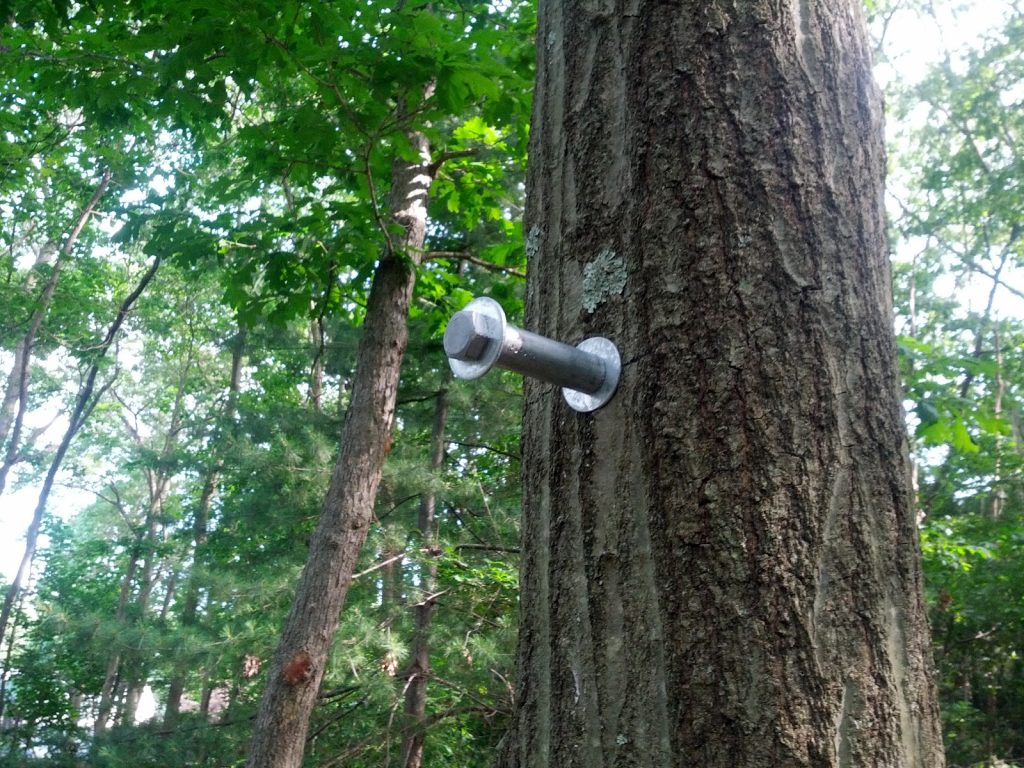
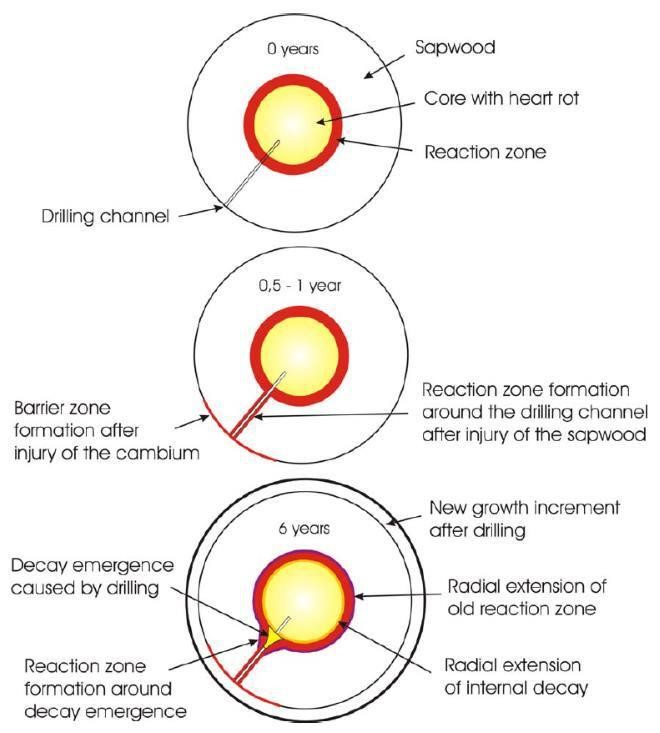
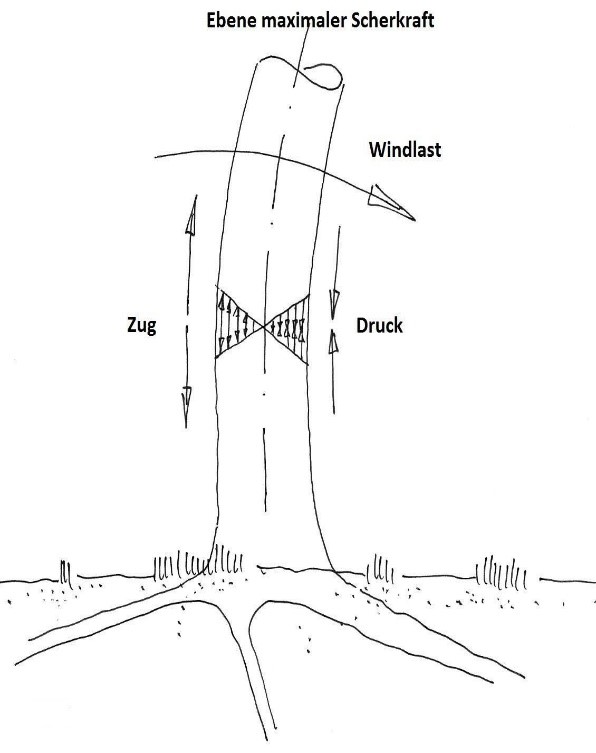
Maybe the most discreet fixation system in a wooded environment. However, it still carries not negligible risks for the biomechanics of trees and their chemical defence system (codit).
Wood is a very elaborate composite material with great multidirectional flexibility and exceptional load-bearing capacity.
To resist the wind and to dampen its assaults it must be able to move in every direction. The fibers that make up the wood have compression and extension capacities that a metal cylinder going through a trunk might hinder. Ensuing biomechanical dysfunctions could lead to the rupture of the trunk.
Moreover, it is impossible to know whether by drilling a trunk, there is no compartmented contaminated infection site. By piercing it, we release pathogens previously confined by the tree to as yet healthy sections of the tree.
Piles
Using piles instead of trees as supports.
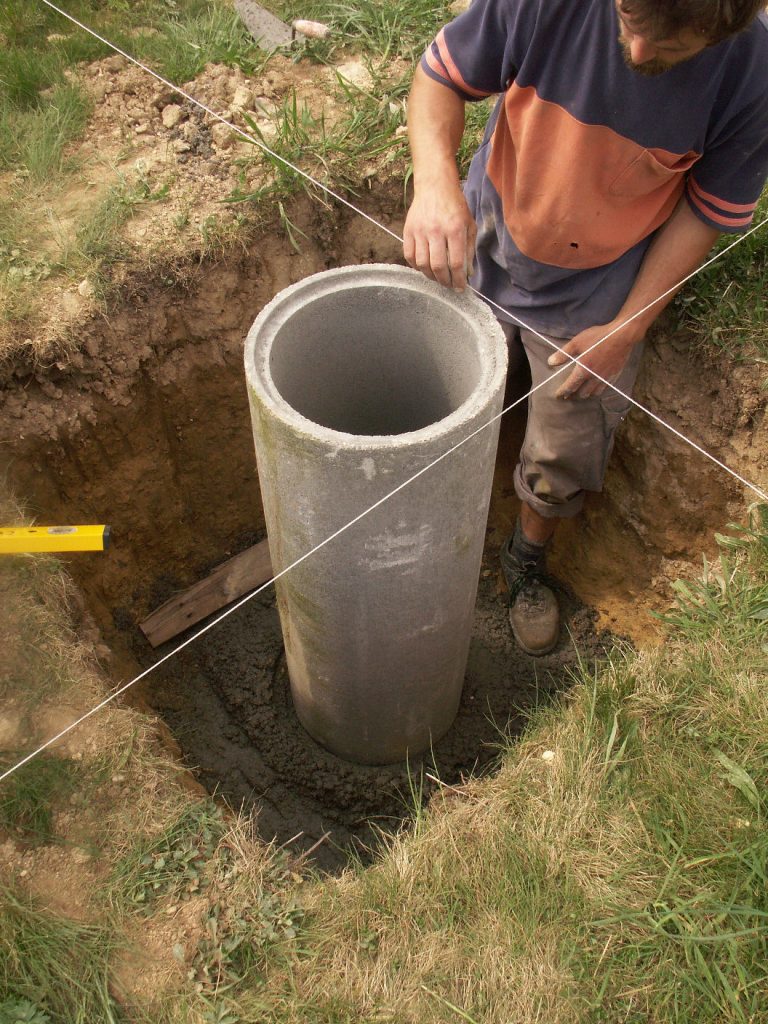
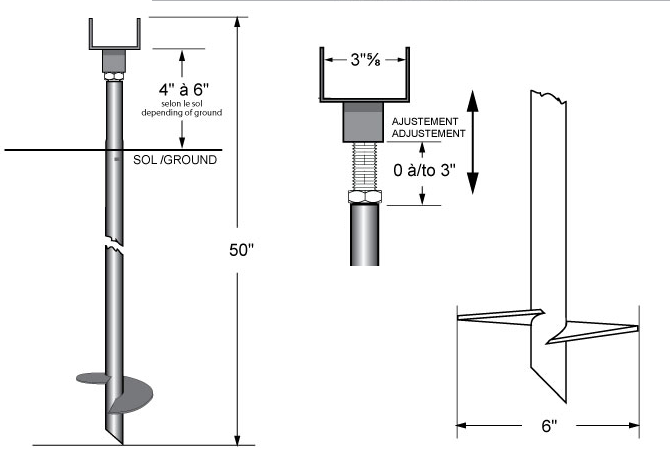
To prevent damage to the trees due to clamping, strapping and perforation, some rely on alternative supports such as piles.
These piles are a valid alternative to using trees as supports, provided great care is taken to minimize the damage to the forest soil and root system.
Screwing a metallic tube of less than 20 cm diameter in the ground does achieve that goal by limiting the unavoidable damage to the diameter of the metallic screw.
Trees and People adoption of "No Trace" technologies
To adapt and contribute to the progress in No Trace technological development, Trees and People activities are focused on four pillars:
The Safety of the Installations and the Protection of the Flora

The 4 pillars on which NO TRACE technologies are built are:
1. The reliance on flexible materials
To avoid crushing the woody tissue that makes up the cambium it is essential to ensure that the surface on which the stresses occur is wide enough. The
best way to evenly distribute these stresses on the uneven surfaces of the trunks is to use straps of widths proportional to the supports’ diameter and stress resilience.
During growth periods, the tree trunks and branches exert an outwards push. This thrust is a force that might interfere with objects obstructing the free expansion. Although this force has never been measured, it is well known to the professionals of the arboriculture who, thanks to their intimate knowledge of the sylva, can feel it coursing through the trees.
To test the reality of this experiential knowledge, we spent the last five years testing it on young oak and beech trees, at the height of their growth, with trunk diameters of between 30 to 110 cm. We applied tensions and stresses equivalent to 1500 kg for at least two consecutive years, distributing the tension forces and stresses through straps, net strips and other textile supports flexible enough to espouse the uneven shapes of trees.
Based on these observations, we calculated the optimal ration between strap width, stress force and contact surface with the trunk. This varies with the type of stress (temporary or permanent), the bark type, the tree growth speed, the strap’s stretching capacity or climate constraints.
A good understanding of these variables and their potential impacts is critical to select the most appropriate fixation system to preserve the tree from damage whilst guarantying the structure’s safety
2. Listening to trees' biomechanics and inner dynamics
A rich experience with ornamental trees combined to an in-depth understanding of the various combinations between straps, steel cables, ropes, nets and fabric flooring is the secret behind our success in creating installations that support forest healthy growth.
Our installations remain flexible and move in sync with the supporting trees, without ever compromising the users’ safety.
3. Leveraging the inter-tree space
The latest generation of textile materials developed for textile architecture and fishing nets is ideally suited to provide tailor-made structures surprisingly secure and pleasing to the eye.
By deploying these structures between the trees, we reduce the negative impact of traditional arboreal platforms to almost zero.
These new technologies open the door to illimited creativity in new ways to inhabit the inter-tree space without form, texture or colour limitation.
4. Soil preservation
The entire activity is taking place away from the soil. With the exception of the access areas, visitors spend their time on suspended nets or other facilities suspended between trees.
Maintenance of the infrastructure or overseeing the activity requires almost no on-soil strolling. As a result, path delimitation or soil protection measures stop being necessary.
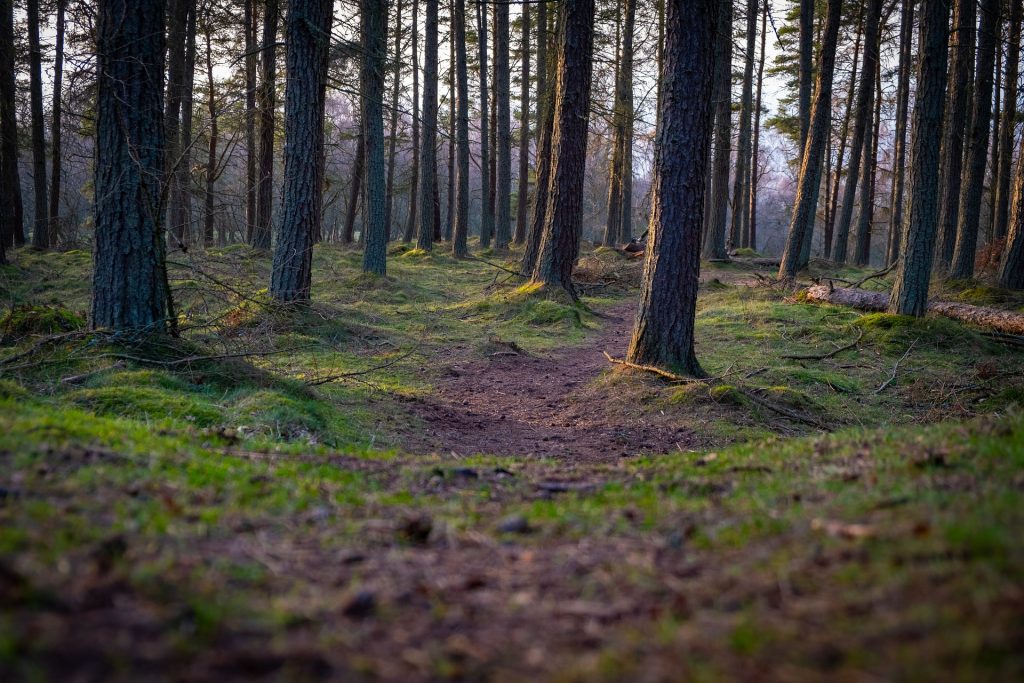
Bibliography
Fournier, M., J. Dlouha, et al. (2013). “Integrative biomechanics for tree ecology: beyond wood density and strength.” Journal of Experimental Botany 64(15): 4793-4815
Moulia B., Coutand C. and Julien JL. (2015). “Mechanosensitive control of plant growth: bearing the load, sensing, transducing,and responding” Front Plant Sci 6 (52): 1-20
Cherubini, P., Schweingruber, F.H. and Forster, T. 1997 Morphology and ecological significance of intra- annual radial cracks in living conifers. Trees – Struct. Funct. 11, 216–222.
Clausen, C.A. 1997 Immunological detection of wood decay fungi – an overview of techniques developed from 1986 to the present. Int. Biodeterior. Bio- degrad. 39, 133–143.
Bethge, K., Mattheck, C. and Hunger, E.1996 Equip- ment for detection and evaluation of incipient decay in trees. Arbor. J. 20, 13–37.
Côté, W.A. 1989 Macroscopic anatomy. In Concise Encyclopedia of Wood & Wood-Based Materials, 1st edn. A.P. Schniewind (ed.). Pergamon Press, Oxford, UK, pp. 190–196.
Mattheck, C.G., Breloer, H., Bethge, K.A., Albrecht, W.A. and Zipse, A.W. 1995 Use of the fractometer to determine the strength of wood with incipient decay. J. Arbor. 21, 105–112.
Badel, E., Fournier, M., Moulia, B., Bonnesoeur, V., Constant, T., Ningre, F., Ruelle, J., Dlouha, J., Decourteix, M., Fournier-Leblanc, N., Julien, JL., Olivar, J. (2013). Responses of cambial growth and wood properties to winds. Dlouhá, J., Gril, J., Clair, B. and Alméras, T. (2009). Evidence and modelling of physical aging in green wood. Rheologica Acta.vol. 48 (3), p. 333-342.
(Plant Biomechanics and Mechanobiology, Journal of Experimental Botany, Volume 64 Issue 15 December 2013)
Gabriele B. Monshausen and Elizabeth S. Haswell: A force of nature: molecular mechanisms of mechanoperception in plants J. Exp. Bot. (2013) 64 (15): 4663-4680 doi:10.1093/jxb/ert204
Boyer, N., Courduroux, J.C. (1998). Thigmomorphogénèse: auxine, calcium et calciprotéines dans la transduction des messages. Bulletin de la Société Royale des Sciences de Liège, 67, 99-103.
Bonnesoeur, V., Constant, T., Moulia, B., Fournier, M. (2016). Forest trees filter chronic wind-signals to acclimate to high winds. New Phytologist, 210 (3), 850-860. DOI : 10.1111/nph.13836
